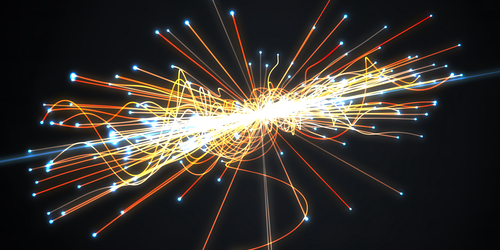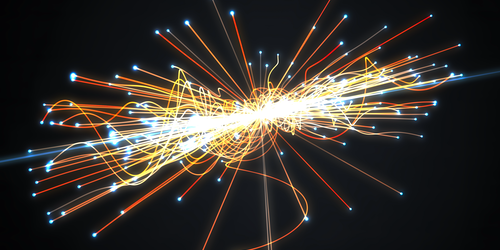Ohm’s Law Violated in Heavy-Ion Collisions
At the Relativistic Heavy Ion Collider (RHIC), New York, and the Large Hadron Collider (LHC), Switzerland, heavy ions are smashed together at high speeds to study the quark-gluon plasma—the hot soup of elementary particles that existed during the Universe’s first microsecond. The strength of the magnetic field produced in these heavy-ion collisions is typically calculated using Ohm’s law of electrical conductivity. But now, Zhe Xu at Tsinghua University in China and his colleagues have shown that such a calculation can overestimate the field strength, and in turn, the magnitude of any exotic field-associated phenomena [1].
The magnetic field of the quark-gluon plasma created in a heavy-ion collision is induced by an electric current that forms at the collision site. This current is usually assumed to have a constant value that is determined by Ohm’s law. However, Xu and his colleagues realized that the current would need some time to reach this value. By considering typical heavy-ion collisions at the RHIC and the LHC, the team calculated that the delay time is longer than two key timescales of such collisions: the time taken to form a quark-gluon plasma, and the lifetime of the external magnetic field produced by protons that do not take part in the collision. They found that such a long delay time greatly reduces the predicted strength of the induced magnetic field.
The team says that this suppressed field could make field-related phenomena too small to be measured using the current RHIC and LHC detectors. Such phenomena include the chiral magnetic effect—the generation of an electric current by a difference in the number of left- and right-handed particles in a magnetic field.
–Ryan Wilkinson
Ryan Wilkinson is a Corresponding Editor for Physics Magazine based in Durham, UK.
References
- Z. Wang et al., “Incomplete electromagnetic response of hot QCD matter,” Phys. Rev. C 105, L041901 (2022).





